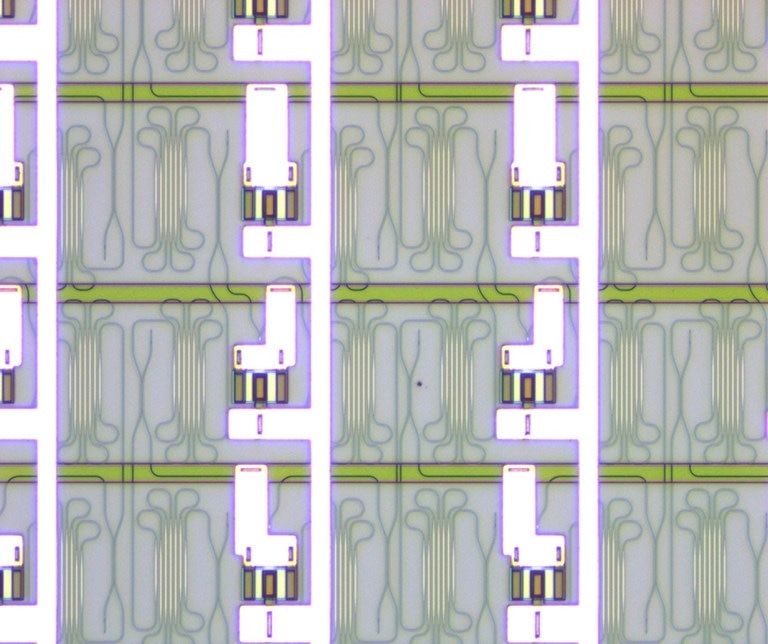Sep 27 2019
Affordable handheld microwave cameras or imagers may soon become a reality, thanks to a novel microwave imager chip recently developed by researchers.
 Researchers fabricated a nanophotonic microwave imager chip. It contains over 1,000 photonic devices, some of which are seen in this close-up. (Image credit: Farshid Ashtiani, Electronic-Photonic Microsystems lab, University of Pennsylvania)
Researchers fabricated a nanophotonic microwave imager chip. It contains over 1,000 photonic devices, some of which are seen in this close-up. (Image credit: Farshid Ashtiani, Electronic-Photonic Microsystems lab, University of Pennsylvania)
Since microwaves have the ability to move through specific opaque objects, the newly developed imagers may prove useful for detecting tumors through the body tissue or imaging through walls.
The scientists have reported their study in Optica—The Optical Society’s (OSA) journal dedicated to high-impact research. They demonstrated how a typical semiconductor fabrication process was used for making a novel microwave imager chip. The square chip contains over 1000 photonic components and measures just more than 2 mm on both sides, which means it has roughly half the thickness of a pencil eraser.
Today’s practical microwave imagers are bench-top systems that are bulky and expensive. Our new near-field imager uses optical, rather than electronic, devices to process the microwave signal. This enabled us to make a chip-based imager similar to the optical camera chips in many smartphones.
Firooz Aflatouni, Study Team Leader, University of Pennsylvania, USA
Several applications like monitoring heart motion and breathing and high-resolution brain imaging can benefit from portable near-field microwave imagers. In addition, compact microwave imagers would be useful for applications like low-power, high-speed communication links and for monitoring objects in radar systems.
Optical Processing Used to Create Microwave Images
Optical cameras such as the ones used in smartphones employ a lens to create an image on the image sensor of the camera. However, in the new near-field imager, four antennas are used to receive microwave signals that are reflected from an object. These microwave signals are encoded within an optical signal and then optically processed—mimicking a microwave lens—to create an image.
The chip-based imager contains over 1000 photonic components like directional couplers, waveguides, ring modulators, and photodiodes. The optical delay element network is one of the main components utilized for signal processing. It contains over 280 delay cells.
This system is significantly smaller and more efficient than its electronic equivalent because the delay cells are more than 10 times smaller and more than 10 times more efficient. They can also operate with significantly shorter microwave pulses, which produces higher imaging resolution.
Farshid Ashtiani, Study Co-Author, Electronic-Photonic Microsystems Lab, University of Pennsylvania
Ashtiani is a graduate student in Aflatouni’s group.
Demonstrating the Microwave Imager
The team demonstrated the novel chip by using it for imaging objects that have metallic surfaces, like metallic squares that measure 24 cm on both sides as well as the UPenn logo. Each object positioned in front of the imager was first illuminated by short microwave pulses and the reflected signals were received by the four antennas. These signals were used for creating the image of every target object.
Our work shows that standard semiconductor fabrication techniques can be used to create robust photonic systems containing many devices. The tiny imager chip we demonstrated can be scaled up, enabling realization of low-cost handheld high-resolution microwave imagers.
Firooz Aflatouni, Study Team Leader, University of Pennsylvania, USA
After demonstrating the chip-based microwave imager, the scientists are planning to raise the number of pixels by increasing the number of on-chip delay lines. This could be done by using state-of-the-art fabrication technologies and stitching tinier images together. The team is also planning to achieve higher resolution through shorter microwave pulses.